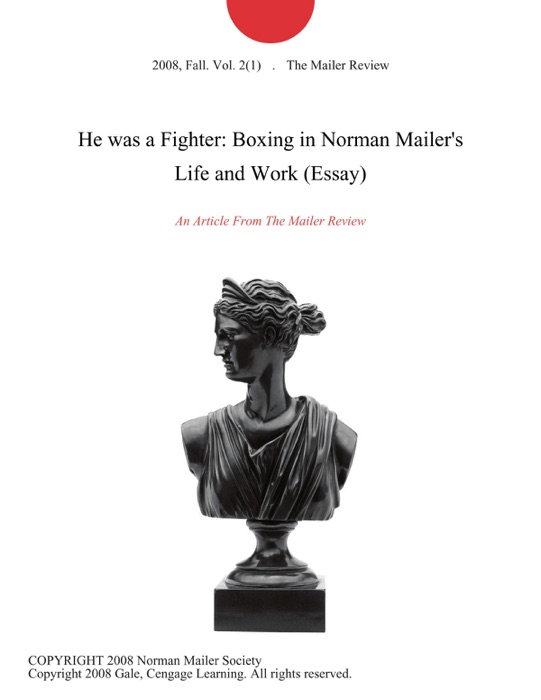[DOWNLOAD] "He was a Fighter: Boxing in Norman Mailer's Life and Work (Essay)" by The Mailer Review # Book PDF Kindle ePub Free

eBook details
- Title: He was a Fighter: Boxing in Norman Mailer's Life and Work (Essay)
- Author : The Mailer Review
- Release Date : January 22, 2008
- Genre: Language Arts & Disciplines,Books,Professional & Technical,Education,
- Pages : * pages
- Size : 181 KB
Description
BOXING HAS PROVIDED A SIGNIFICANT MORAL PARADIGM throughout much of Norman Mailer's life and work. In his seminal essay entitled "Death" in The Presidential Papers (1963), Mailer uses the first Sonny Liston/Floyd Patterson championship bout as a point of departure from which to develop a profound series of perceptions about the American national temperament, particularly that of blacks. In King of the Hill (1971) and more strikingly in The Fight (1975) he deals nominally with a specific championship bout, but goes beyond journalism to find certain normative precepts in the sport. But there is another level on which boxing informs and conditions Mailer's vision: In his fiction, most notably An American Dream (1965) and Tough Guys Don't Dance (1984), boxing experiences help define the protagonists. Stephen Richards Rojack and Tim Madden respectively find "the reward of the ring" (Dream 16) applicable to their existential quests for self. Ultimately, Mailer's views on boxing are far from simplistic. From the powerful account of Benny Paret's death in the ring at the hands of Emile Griffith to his statements to me about the ill-fated conclusion to Muhammad Ali's career to his 1988 article on Mike Tyson, "Fury, Fear, Philosophy," Mailer has found in this arena of ritualized violence a rich source of perception about the human condition. In fact, in his 1993 essay in Esquire, "The Best Move Lies Next to the Worst" (reprinted in The Time of Our Time), he deals with his own boxing experiences at the Gramercy Gym with Jose Torres, Ryan O'Neal and others. The title of the piece comes from the comparison of boxing to chess (Time 1045-1052). I believe it's best to confront the central issue here at the outset. Mailer has, indeed, perceived gladiatorial confrontation and violence as a central metaphor for his own artistic and personal struggles for growth, fulfillment, salvation. As he muses retrospectively upon a turning point in his career during his personal crises of the early 1960s,